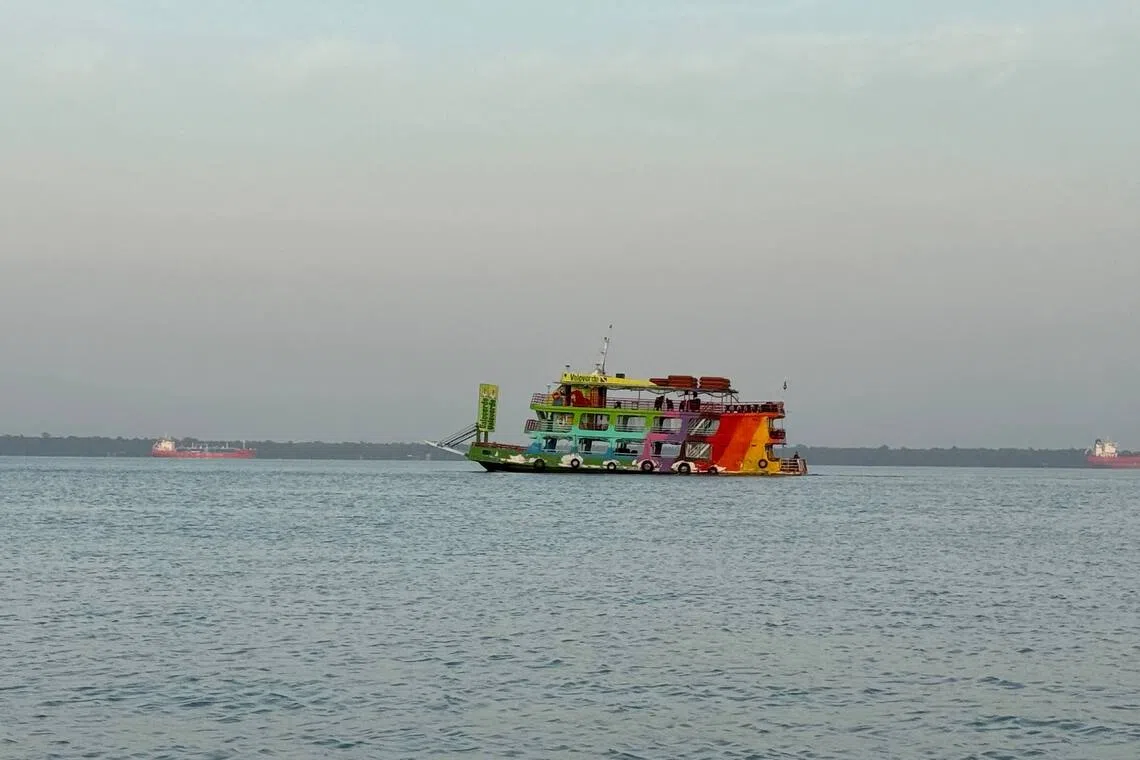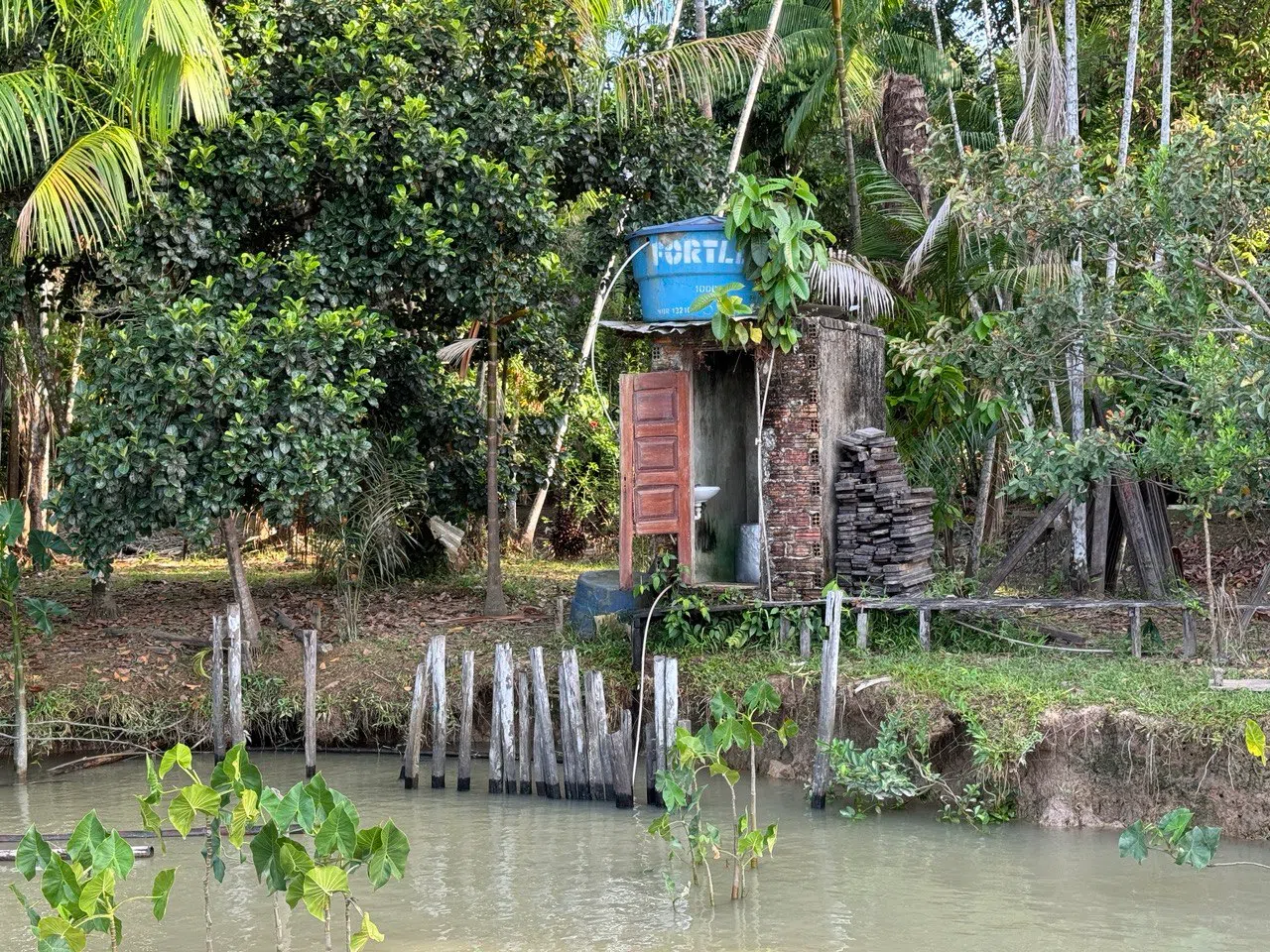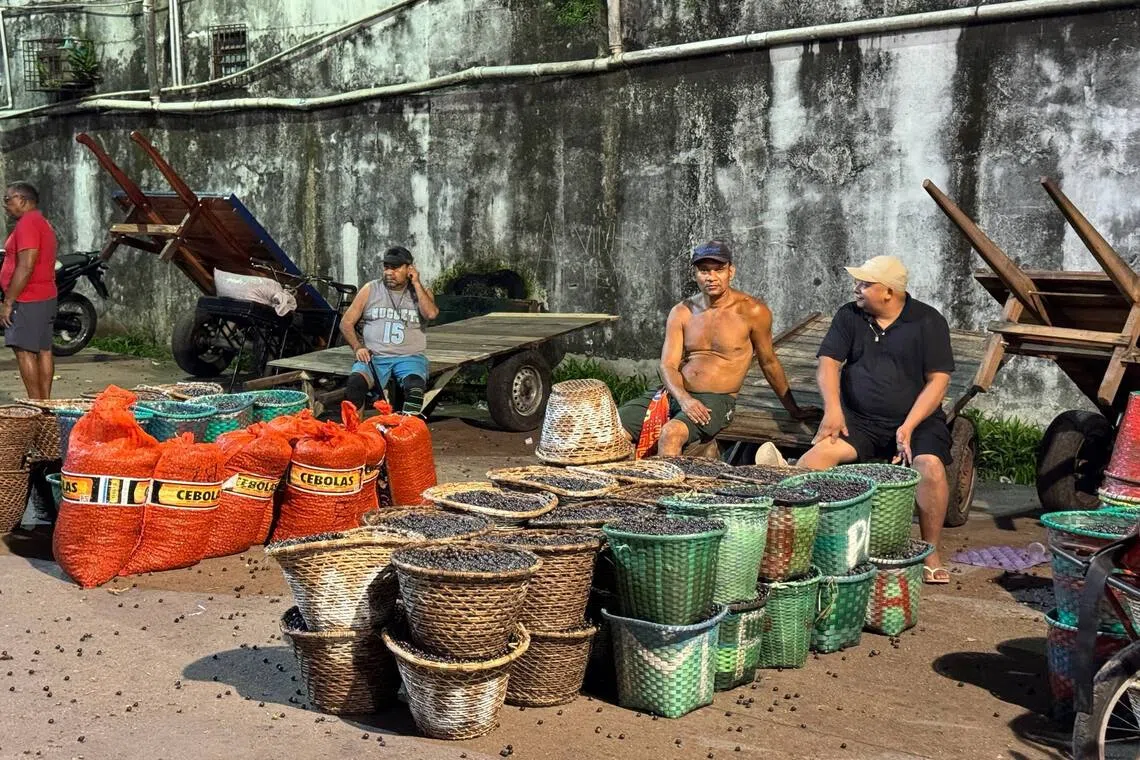BELEM, Brazil – A 10-minute boat ride from Belem, where the world’s largest annual climate conference COP30 is underway, Combu Island is slowly crumbling from the attention of its well-heeled visitors.
In recent years, the island’s tranquil rainforests and rustic stilt houses have become a hit among local and domestic tourists hankering for a taste of Amazonian life within reach of the city, resident Lana Pantoja told a group of seven youth delegates from Singapore on Nov 14.
People visit the river island on the outskirts of Belem for its cuisine, culture and natural beauty.
The Singaporeans, who are in Brazil to participate in the UN summit under a government-funded programme, were taking part in a field trip to learn more about environmental challenges faced by people living there.
The Climate Youth Development Programme, now in its third year, is an initiative that brings together young people who are passionate about addressing environmental sustainability and climate change issues in the Republic.

A boat for tourists plying the waters of the Guama River, where Combu Island is located.
ST PHOTO: ANG QING
A handful of participants also get the chance to attend the yearly UN climate conferences. This year marks the first time that programme participants had a field trip to explore the host city.
From the crack of dawn to dusk, the youth from Singapore, aged 19 to 31, learnt about the livelihoods of those who depend on the forest through a tour organised by Gastro Brazil Tours. This ranged from harvesting acai, a berry that is a staple of the Amazon, to the fashioning of toys from the miriti tree, a palm dubbed as the styrofoam of the forest for its versatility.

The miriti palm tree is used to make toys and trinkets.
ST PHOTO: ANG QING
But the throngs of tourists, diners and party boats are accelerating the erosion that is eating away the edges of the island, according to Ms Pantoja, whose family has settled on the island last century.
She and her fellow residents, who identify as riverine people, a community that subsists through fishing and harvesting from the forest, attributed the accelerated erosion of their island home, the fourth largest of Belem’s 42 islands, to the high visitor traffic.
“In the past, the river currents slowly took the edge away, however, this has accelerated in the past 10 to 20 years after tourism grew completely out of control, as more vessels have crowded the waterways,” she said in Portuguese via a translator.
The yoga teacher pointed to a toilet at the edge of the river bank, saying that it was the last remnant of her old family home. The family is building a newer structure further inland.
Only the big restaurants and wealthier homes were able to build retention walls to protect themselves, she said, as sputtering motorboats occasionally punctuated her talk.
Her experience highlighted the different impacts that environmental degradation can pose to various communities. In particular, the least well-off groups often do not benefit from economic development, yet are the ones most vulnerable to the damage.

The toilet of Ms Lana Pantoja’s old home was once situated at the back. Soil erosion has caused the site of the old home to crumble away.
ST PHOTO: ANG QING
For fourth-year political science undergraduate, Brendan Toh, 25, hearing the negative impact that some Belem residents had on the inhabitants of Combu came as a surprise.
The National University of Singapore student said: “We tend to look at overseas communities as homogenous groups, because of the way that UNFCCC negotiations work, where one party’s view is represented by a delegate.
“But the lived reality on the ground shows that there are different perspectives.”
The UNFCCC is the global body administering the Paris Agreement, the global treaty against climate change, and the organiser of the yearly climate conferences. COP30 started on Nov 10 and is expected to conclude by Nov 21.
On Nov 14, the youth got a flavour of the communities that lay beyond the curated conference venue, where over 56,000 registered delegates from across the globe are gathered to discuss how to tackle climate change.
Already, some local communities have already tried to get delegates to pay attention to their plights, with tensions bubbling over from their river and forest homes into the conference venue.
There have been multiple protests and demonstrations, many involving indigenous groups, at the conference venue. A key source of unhappiness for the communities was a decision by the Brazilian government in late October to open the Amazon rainforest
for exploration to drill for fossil fuels
.
Brazil is home to 391 Indigenous ethnic groups, according to a 2022 estimate, with most Brazilians being of mixed race due to its history.
Over a lunch of Amazonian cuisine, the group also spoke to urban ecology and climate change researcher Samyla Bloi at Belem’s Laboratorio da Cidade, a non-profit organisation, about the concerns of indigenous communities, and the divisions in Brazilian society.
For instance, she pointed out how some groups were more concerned about infrastructure and earning an income, instead of environmental consciousness.
Said Mr Toh: “Before the field trip, I had the impression that everyone in the Amazon was a staunch defender of the environment and conservation.
“But after hearing what the locals have to say, it’s not the case. They’re not just a monolith, but there are different viewpoints within the Amazon community.”
Meanwhile, observing the supply chain of acai from its harvest to its processing left a deep impression on Ms Riddhi Manoj Mehta, 27, a sustainability and environment project manager in the aviation industry.

Freshly processed acai being prepared on Combu Island.
PHOTO: RIDDHI MANOJ MEHTA
Acai is traditionally eaten unsweetened in northern Brazil, where Belem is located.
In recent years, acai harvests have been
feeling the heat
of climate change, according to a study by the Brazilian Agricultural Research Corporation, potentially posing a risk to incomes that depend on the popular berry.
Ms Riddhi said: “In Singapore we can be quite removed from where food comes from, as most of our food is imported, and how climate change can affect crops.
“Here we see that people are very connected to the land that they harvest from and live on.”
In particular, witnessing the dependence of the people on nature impressed upon Ms Riddhi how climate change tends to be more adversely felt by rural communities that are dependent on nature.

Baskets of acai berries being sold on Nov 14 at the Acai port in the Juranhas neighbourhood in Belem.
ST PHOTO: ANG QING
Against the backdrop of the ongoing talks at COP30, where countries are hashing out what it means to enact a fair and inclusive approach to the transition to a low-carbon future, both participants hope to share their experiences with their peers back home.
Recounting a comment by one of the locals that the rising tide does not lift all boats, Mr Toh said he is determined to bring that spirit of including as many communities as possible back to Singapore.
“I realised I’ve been focusing too much on people who are already aware of the climate emergency, and lumping people who are not taking action as lost causes.”

